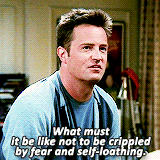"See, a lot of people have taste, but they don't have the daring to be creative. Here we are in the age of the cookie-cutter sameness. There are few that are rarities: someone who doesn't look like they were stamped out of ten-million people looking all the same."
– Bill Cunningham
The recently-late Bill Cunningham inspired a culture of innovation that leaked a certain scent of eccentricity one does not find just anywhere. He shuffled the art of fashion photography and street documentary in his stomping grounds at New York, where he captured the life in colorful outfits and everyday street wear.
When the Boston-native photographer passed away this June, the city lost a gem. The New Yorker even once dubbed his work as an “an exuberant, sometimes retroactively embarrassing chronicle of the way we looked.”
Mr. Cunningham himself had an odd sense of fashion – on top of a pair of khakis and black shoes, he clad himself in a blue jacket worn by French janitors. That's not exactly what one would imagine the earl of fashion photography to be wearing yet there he was.
For myself, it's easy to look at Mr. Cunningham and say, "Golly, I aspire to be just like him one day." It's easy to take my 35mm point-and-shoot camera, hop on my bicycle, and ride around town to snap photographs of people every once in a while. It's easy to find two or three photographs worth posting on Instagram, mimicking and drawing inspiration from his endeavors.
However, to live a lifestyle like his is simply not that easy, not when pursuing what's practical and stable seems to be what most people see as "successful."
By that, I mean the sciences – medicine, engineering, computing, and, some might argue, business.
According to research by Economic Modeling Specialists International in 2015, the demand for STEM (science, technology, engineering, and mathematics) talent in the United States will grow by 17 percent from 2014 to 2024. Engineering (12 percent), computing (19 percent), and advanced manufacturing (16 percent) careers will overtake the demand for non-STEM jobs (12 percent). Median earnings for STEM careers are also significantly higher than for all other jobs – a whooping $37.44 per hour compared to $18.68 per hour.
From this, we can infer that the demand is present because society values the progress we are making in the scientific field for the sake of our economy. While it's no question that choosing a career in STEM is a noble pursuit, there is a sense of condescension towards people who chase after the stars in the world of arts and humanities.
You see, it's easy to take up what Mr. Cunningham does as a hobby. Many professionals have done it: mechanical engineer on the weekdays, street photographer on the weekends. But to ride your bicycle and lurk on the busy streets for the sake of photography on a daily basis? Now, that's a little too adventurous for many.
What does it mean to be a creative in a world that sees art as a hobby rather than as a profession?
Suppose we live in a world where we have achieved some of the greatest comforts known to man – healthy bodies, sustainable economies, convenient technology, and growing infrastructures.
Would be we finally content? Could we finally say, "Yes, this is the abundant life!"
I highly doubt it.
Why?
Because we are human beings created to find purpose and passion in life beyond comfort and stability. Our lungs are filled with the fiery passions that created world wars and painted Mona Lisa. We crave the mountaintop experience – whether it's the sight of the breathtaking Alaskan back country on the way to Mt. Denali or reading a beautiful poem written by a timid high schooler.
There is something ordinarily beautiful about wanting to create something that makes people feel but it is not easy to do it – not every day, not for a living, not for a lifetime.
That's why I look up to people like Mr. Cunningham. Like he said, a lot of people have taste. It's easy to create a sense of aesthetic for your personal life whether it relates to fashion, beauty, art, or literature (just look at your average millennial's Instagram page). At the end of the day, aesthetic merely becomes another mask we wear.
To live ordinarily and blandly is something I personally dread. Sometimes, that aversion can turn into a selfish pursuit (e.g. being different for the sake of being different) but striving for ingenuity and originality isn't a narcissistic cause. However, it can appear to the rest of the world as such. People generally don't like to break tradition and do things differently.
On the surface, comfort is man's greatest need. Though if one looks inwardly, they will discover that purpose and passion will compel someone to abandon their constructed bubble.
That's why it takes guts and daring to be creative; to put all your chips in, take a deep breath, and say, "I'm all in. Let's do this."










































